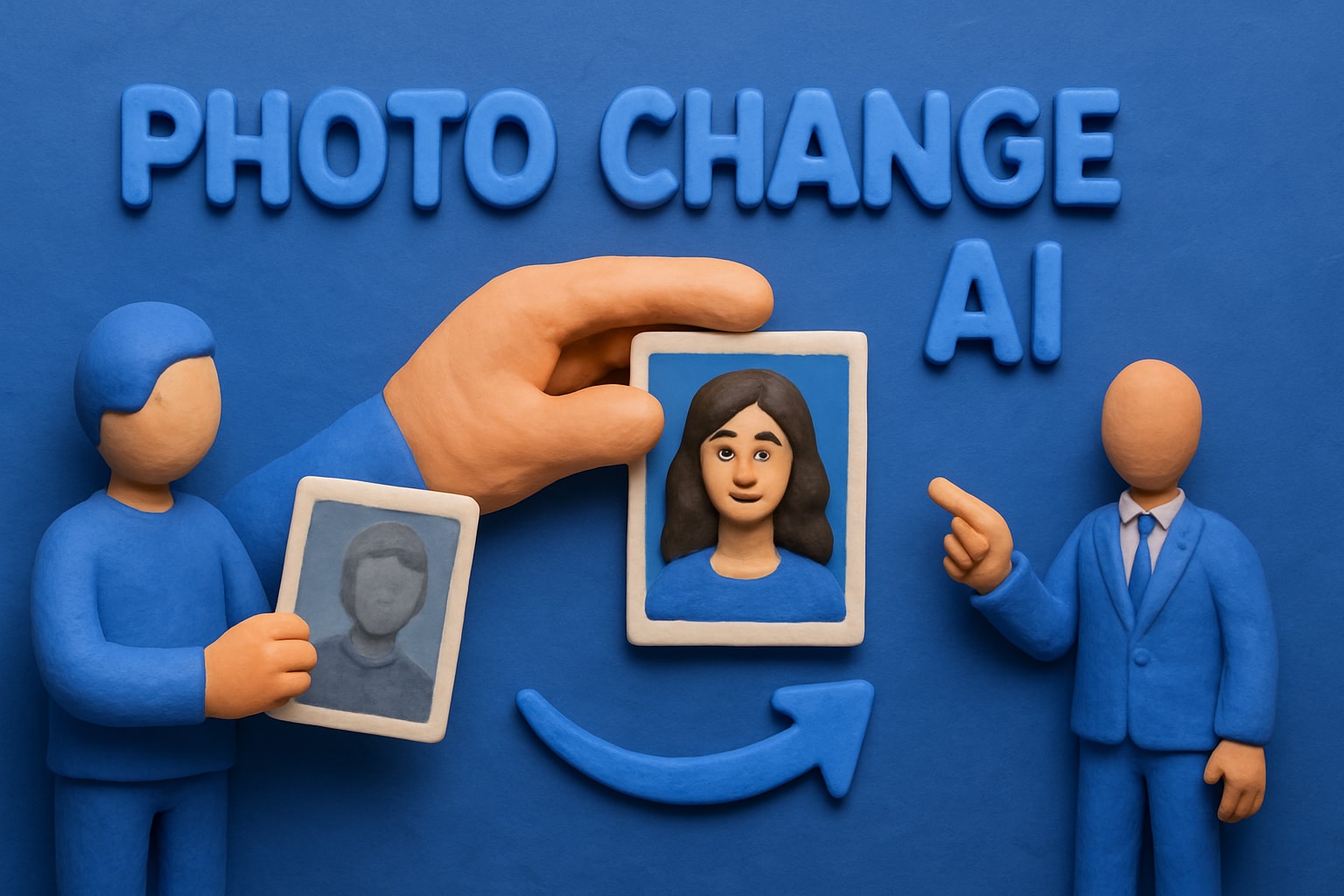Oct 18, 2025
7 Ways Virtual Staging Real Estate Transforms Home Sales in 2025
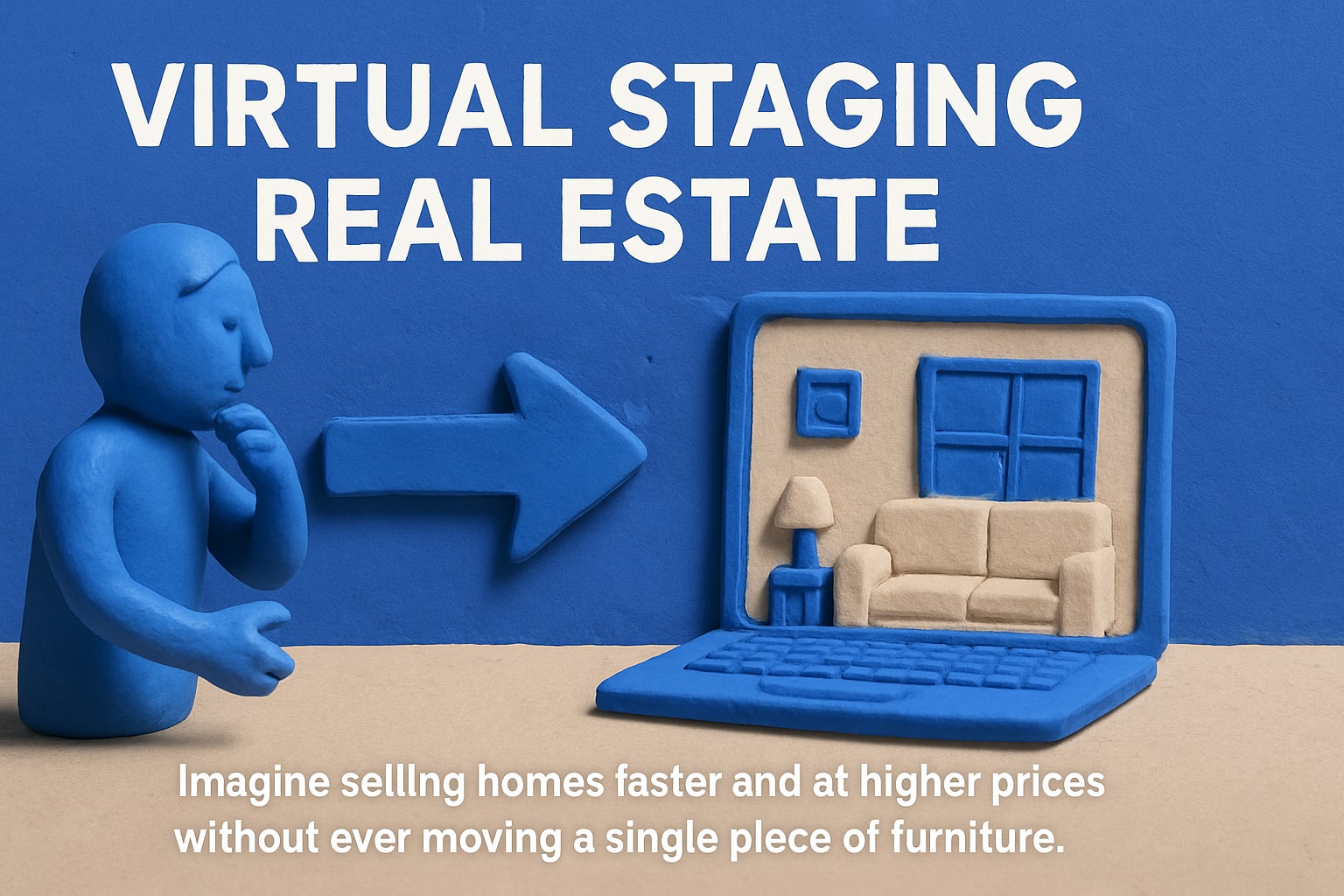
Imagine selling a home in days rather than weeks, without moving a single piece of furniture. In 2025, virtual staging real estate is transforming the way agents and sellers attract buyers, making listings more engaging and market-ready in record time. This article uncovers seven powerful ways this technology is changing the game, from boosting online appeal to offering affordable, customizable solutions. Discover how embracing these innovative strategies can help you stay ahead in a rapidly shifting real estate market.
The Rise of Virtual Staging in Real Estate
The landscape of virtual staging real estate is shifting rapidly as technology and buyer behavior evolve. Sellers and agents now have more accessible, flexible, and impactful ways to present properties, changing how homes are marketed and sold.
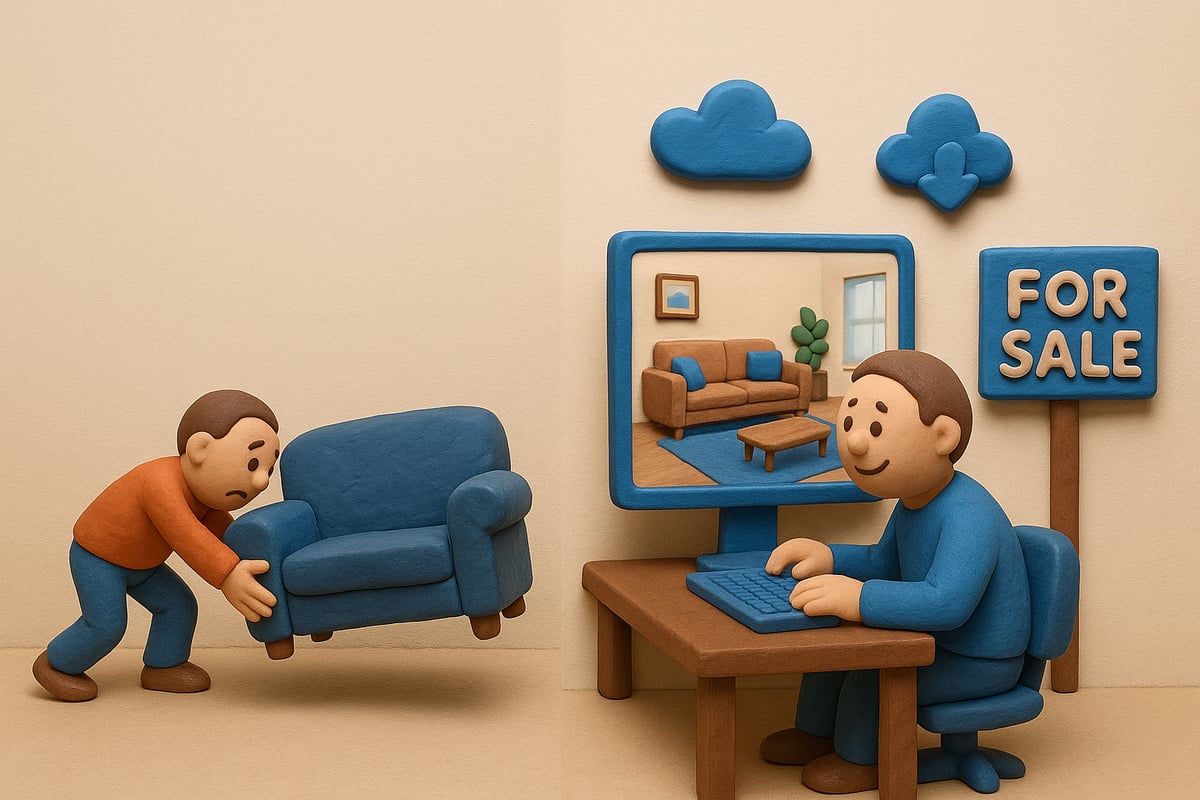
The Evolution from Traditional to Virtual Staging
Traditional home staging required significant investment in time, money, and logistics. Agents and sellers faced costs for renting furniture, hiring movers, and coordinating schedules, often spending thousands of dollars and days preparing a property. In contrast, virtual staging real estate emerged as a solution to meet the needs of a digital-first market, where most buyers start their search online and expect visually compelling listings.
Virtual staging real estate offers photorealistic visuals at a fraction of the price, making it a practical choice for sellers at every price point. Industry studies, such as those highlighted in virtual staging statistics 2025, reveal that staged homes consistently sell faster and command higher prices. For example, the National Association of Realtors reports staged properties sell 88% faster and for up to 20% more. Virtual staging real estate democratizes access, allowing even budget-conscious sellers to compete in the market.
Key drivers fueling this shift include the rise of online home searches, higher buyer expectations for lifelike images, and the growing market share of virtual staging providers in 2024 and 2025. This transformation is leveling the playing field for sellers, agents, and buyers alike.
Technology Advancements Fueling Virtual Staging in 2025
Recent innovations are taking virtual staging real estate to new heights. Artificial intelligence now powers ultra-realistic rendering and real-time customization, giving agents the power to tailor listings instantly. Cloud-based platforms allow for seamless collaboration between sellers, agents, and designers, supporting instant edits from anywhere.
Modern virtual staging real estate leverages advanced 3D modeling, precise lighting, and detailed textures, making staged photos nearly indistinguishable from reality. Integration with MLS and major real estate portals enables agents to update listings quickly, ensuring buyers always see the most current visuals.
A notable case study: listings with virtual staging real estate on platforms like Zillow and Redfin show measurable increases in buyer engagement. Buyers spend more time on these listings and are more likely to schedule showings or make offers. These advancements not only streamline the selling process but also raise the bar for property marketing in 2025.
7 Ways Virtual Staging Real Estate Transforms Home Sales in 2025
In 2025, virtual staging real estate has redefined the way properties are marketed and sold. Sellers and agents alike are embracing digital solutions that deliver stunning visuals, speed up transactions, and expand buyer reach. Let us explore seven transformative ways virtual staging real estate is changing the landscape of home sales.
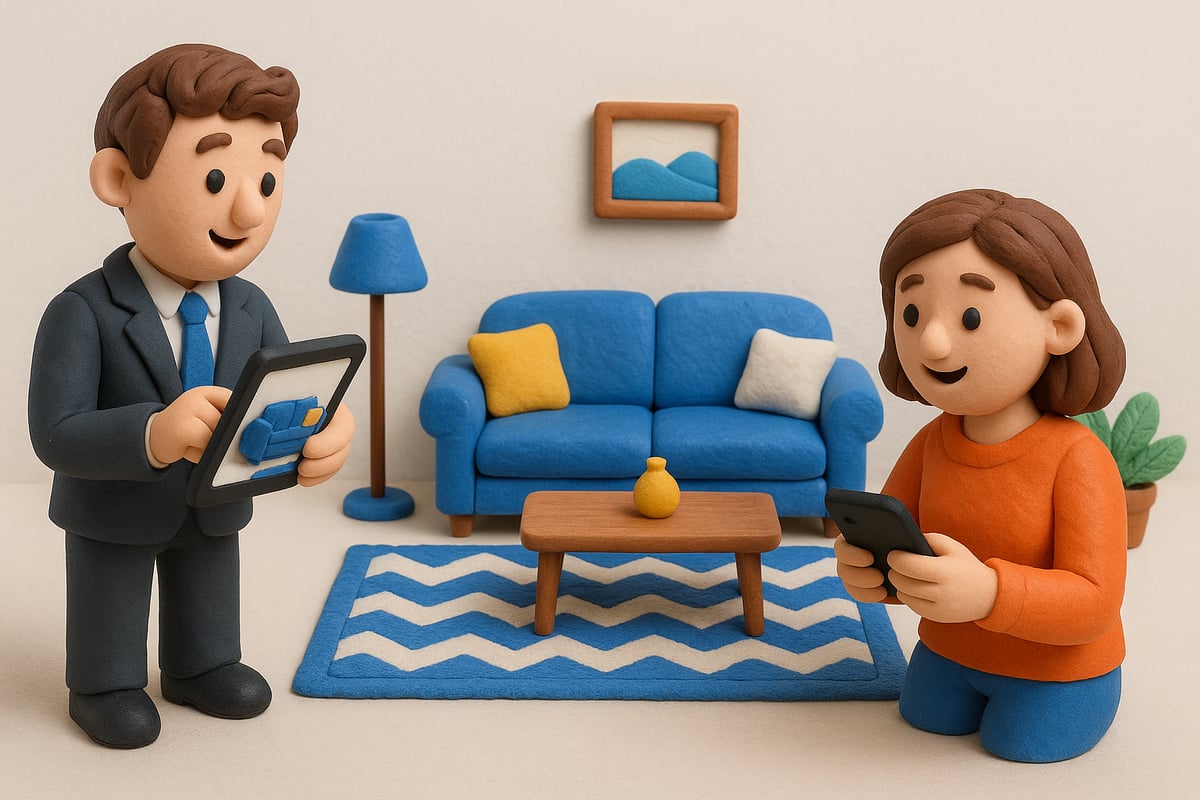
1. Enhances Online Listing Appeal
Virtual staging real estate dramatically boosts the visual impact of property listings. High-quality staged images attract more clicks and views, especially when compared to empty or outdated photos. Buyers browsing online are more likely to pause and engage with listings that showcase stylish, inviting interiors.
For example, a vacant home that undergoes virtual staging real estate typically sees a 40% surge in online inquiries. This is because furnished visuals help buyers picture themselves living in the space, forming a faster emotional connection. Listings with virtual staging real estate not only stand out in crowded marketplaces but also support mobile-first browsing with scroll-stopping images.
Psychologically, virtual staging real estate helps buyers see a property as a potential home, not just a bare structure. This differentiation is crucial for agents and sellers aiming to maximize exposure. According to recent data, listings utilizing virtual staging for real estate consistently spend fewer days on the market, as they capture attention quickly and leave a lasting impression.
2. Reduces Time on Market
One of the most notable benefits of virtual staging real estate is its ability to shorten the time a property remains on the market. By creating an immediate, compelling first impression, staged listings attract serious buyers faster. Agents can launch properties without delay, skipping the logistical hurdles of physical staging.
In 2024, case studies showed that properties using virtual staging real estate sold up to 30% quicker than their non-staged counterparts. This speed comes from the ability to update decor instantly, respond to buyer feedback, and refresh images without waiting for furniture deliveries or setup crews.
Virtual staging real estate also broadens the buyer pool by appealing to remote and international clients who may rely solely on online visuals. The reduced downtime between listing, showing, and selling streamlines the process for both agents and homeowners, allowing for more efficient turnover.
3. Offers Cost-Effective Customization
Traditional staging can be expensive, often costing thousands of dollars for furniture rental, delivery, and setup. Virtual staging real estate, by contrast, offers professional results for a fraction of the price, typically ranging from $30 to $100 per photo. This cost-effective approach allows sellers to showcase multiple interior styles—modern, traditional, or luxury—without incurring additional expenses.
A significant advantage of virtual staging real estate is the elimination of physical logistics. There is no need to rent, move, or store furniture, and sellers can customize the same room for different buyer demographics. Flexible pricing models, such as pay-per-image or subscription packages, make virtual staging real estate accessible to agents and homeowners at all price points.
The return on investment is clear: virtual staging real estate enhances property value perception with minimal financial risk, making it a smart choice for maximizing listing impact.
4. Showcases Property Potential and Flexibility
Virtual staging real estate excels at helping buyers visualize the true potential of a property. By digitally furnishing rooms as home offices, gyms, nurseries, or entertainment areas, agents can inspire buyers and overcome objections about awkward or underutilized spaces.
For instance, transforming a bare basement into a cozy media room or a guest suite using virtual staging real estate can dramatically shift buyer perception. This tool is also invaluable for visualizing renovations, such as open-concept layouts or updated finishes, and is particularly effective in marketing pre-construction and new development properties.
By illustrating “what could be,” virtual staging real estate increases buyer confidence and fosters a broader interest. Data consistently shows that staged flex spaces draw attention from diverse buyer groups, expanding market opportunities for sellers.
5. Simplifies Marketing for Remote and International Buyers
The global real estate market continues to expand, with more buyers purchasing homes from afar. Virtual staging real estate bridges the gap for those unable to attend in-person showings. Staged images and virtual tours allow remote and international buyers to experience properties in detail, fostering trust and engagement.
For example, it is increasingly common for international buyers to make offers sight-unseen, relying on the immersive power of virtual staging real estate. This approach supports relocation and investment purchases by providing clear, aspirational visuals that transcend borders.
Virtual staging real estate integrates seamlessly with virtual open houses and 3D walkthroughs, offering a comprehensive experience. It also reduces travel and scheduling barriers, enabling busy buyers to make informed decisions quickly. As a result, agents can extend their reach beyond local markets and tap into a global clientele.
6. Enables Quick Adaptation to Market Trends
The real estate landscape is constantly evolving, with design trends shifting rapidly. Virtual staging real estate empowers agents to respond instantly to buyer preferences by updating decor styles, color palettes, and layouts with minimal effort.
For example, if biophilic design becomes popular in spring 2025, agents can refresh listing photos using virtual staging real estate to reflect trending colors and elements. This flexibility allows for A/B testing of images to determine which styles generate the most engagement.
Listings that are regularly updated with new virtual staging real estate see renewed buyer interest and increased activity. By keeping visuals current and competitive, agents ensure their properties remain top-of-mind in a fast-moving market.
7. Supports Transparent and Ethical Marketing Practices
Transparency is critical in real estate marketing. Virtual staging real estate supports ethical practices by requiring clear disclosure when images have been digitally altered. Marking photos as “virtually staged” maintains buyer trust and aligns with industry guidelines.
Educating clients about the distinction between staged images and the physical property helps set accurate expectations and reduces the risk of misrepresentation. For example, most MLS platforms require a visible “virtually staged” watermark on edited photos.
By adhering to these standards, agents using virtual staging real estate build a reputation for honesty and professionalism. Buyers appreciate the clarity, which increases engagement and positive feedback. Ultimately, transparent practices benefit all parties and contribute to a healthier market.
Key Technologies Driving Virtual Staging Innovation
The rapid evolution of virtual staging real estate is powered by cutting-edge technologies that redefine how homes are presented and marketed. As we enter 2025, artificial intelligence, machine learning, and immersive visualization tools are reshaping the industry, making property listings more dynamic, personalized, and engaging.

Artificial Intelligence and Machine Learning
Artificial intelligence is the driving force behind the most significant advances in virtual staging real estate. AI-powered platforms now deliver photorealistic furniture placement, natural lighting effects, and rapid image editing at a scale unimaginable just a few years ago.
One of the most impactful applications is automated decluttering and object removal. Solutions like Declutter room with AI tools allow agents to instantly clean up property photos, removing distractions before staging begins. This streamlines the process and ensures every listing looks inviting from the start.
Machine learning algorithms further enhance virtual staging real estate by analyzing buyer data to recommend optimal layouts, color palettes, and styles. Natural language processing enables agents to describe desired changes in plain terms, making customization accessible even for those without design expertise.
AI-driven personalization adapts staging to specific buyer personas, helping homes resonate with diverse audiences. According to recent industry data, these platforms can reduce editing time by up to 80 percent, accelerating time-to-market for listings.
The result is a seamless workflow where agents and sellers can transform spaces quickly, efficiently, and with remarkable visual appeal.
3D Visualization and Augmented Reality
Immersive visualization is revolutionizing the virtual staging real estate experience for both buyers and sellers. Advanced 3D modeling lets potential buyers explore staged rooms from any angle, offering a sense of depth and realism that static photos cannot match.
Augmented reality (AR) applications are increasingly popular, allowing users to overlay virtual furnishings onto real spaces during in-person tours. With just a smartphone or tablet, buyers can visualize different layouts, styles, or renovations right on site.
This interactive approach not only boosts engagement but also empowers buyers to experiment with possibilities, turning imagination into a tangible preview. For agents and developers, 3D and AR tools support before/after galleries, virtual renovation previews, and even interactive walkthroughs for new developments.
By integrating these technologies, virtual staging real estate listings stand out in a crowded digital marketplace and provide a richer, more memorable experience for every prospective buyer.
Best Practices for Maximizing Virtual Staging ROI
Maximizing your return on investment with virtual staging real estate requires not only stunning visuals but also a clear strategy and adherence to industry standards. By following proven best practices, agents and sellers can ensure their listings stand out and foster trust with buyers.
Strategic Photo Selection and Staging Techniques
Choosing the right photos and employing effective staging techniques are foundational for virtual staging real estate success. Start by focusing on high-impact rooms that buyers care about most, such as living rooms, kitchens, and primary bedrooms. These spaces often define a property’s appeal and set the tone for the entire listing.
Use neutral, inviting decor styles to attract a broad audience. Avoid over-staging or cluttered visuals, which can distract buyers from the property’s true potential. Consistency in lighting, image angles, and quality across all photos is essential for a professional presentation.
Leverage industry tools and expert services for optimal results. For example, Photo editing for realtors can complement virtual staging real estate by enhancing image clarity, correcting colors, and removing distractions. This ensures each staged photo is both realistic and appealing.
Consider these key strategies:
- Prioritize rooms that influence buying decisions.
- Stick to styles that highlight space and functionality.
- Collaborate with virtual staging professionals for tailored results.
- Use analytics to determine which staged images drive the most engagement.
By refining your approach to photo selection and staging, you can maximize the impact of virtual staging real estate and capture buyer interest more effectively.
Compliance and Disclosure Guidelines
Maintaining compliance and transparency is crucial when using virtual staging real estate. Clear disclosure builds buyer trust and protects agents from potential legal issues. Always label virtually staged images in your listings, making it obvious which photos have been altered.
Follow your local MLS and real estate board policies regarding photo modifications. Many organizations require a visible watermark or disclaimer stating “virtually staged.” Educate your clients about the benefits and limitations of virtual staging real estate, ensuring they understand the difference between staged visuals and the actual property condition.
Best practices include:
- Mark all edited images with a “virtually staged” label.
- Provide a brief explanation of virtual staging in the property description.
- Stay updated on current regulations and guidelines.
- Be proactive in addressing buyer questions about staged photos.
By prioritizing compliance, you foster transparency and build a reputation for honesty and professionalism. This approach not only protects all parties involved but also enhances the perceived value and credibility of your virtual staging real estate marketing.
Weezard AI: Next-Generation Virtual Staging and Photo Enhancement
Revolutionizing virtual staging real estate, Weezard AI is designed for agents, property managers, and photographers seeking a smarter way to market listings. This advanced platform leverages artificial intelligence for seamless image editing, enabling users to transform empty or outdated spaces into visually compelling homes in minutes. Weezard AI’s intuitive interface means you do not need specialized skills to achieve professional results.
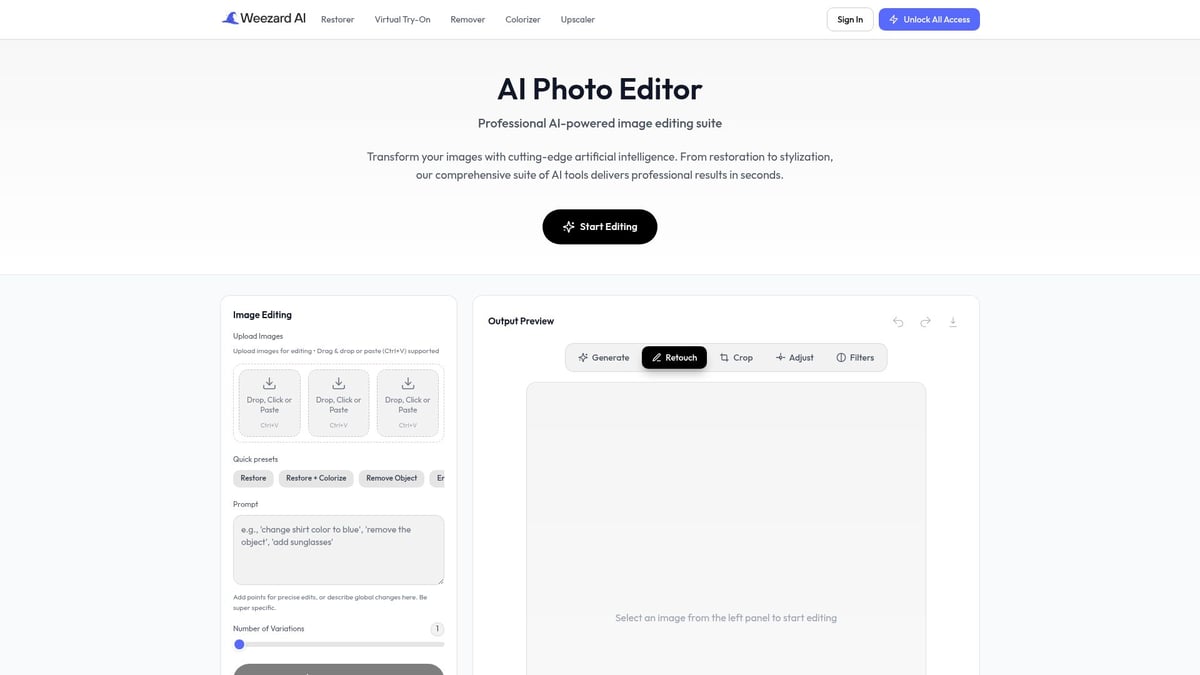
With Weezard AI, virtual staging real estate becomes a streamlined process. Core capabilities include virtual staging, decluttering, day-to-dusk editing, and object removal, all delivered in high resolution. Users can issue natural language prompts for quick, precise changes, keeping every listing visually competitive. For new developments and presale properties, Weezard AI offers specialized solutions—learn more about new development and presale staging to see how marketing for pre-construction homes is elevated.
Here is how Weezard AI stands out in the virtual staging real estate landscape:
| Feature | Weezard AI | Traditional Staging |
|---|---|---|
| Turnaround Time | Minutes | Days to Weeks |
| Cost per Image | Low, flexible | High, per project |
| Editing Skills Required | None, AI-powered | Professional needed |
| Customization | Instant, unlimited | Limited, physical |
| Access | Online, anytime | Onsite only |
Use cases for Weezard AI include:
- Enhancing vacant listings with realistic furniture
- Updating dated decor effortlessly
- Creating before/after galleries for renovations
Flexible pricing means agents can choose pay-per-image, subscriptions, or custom packages, with details available on the Weezard AI Pricing Page. By addressing every stage of virtual staging real estate, Weezard AI helps users prepare listings faster, appeal to modern buyers, and ultimately close sales with greater efficiency.
The Future of Virtual Staging in Real Estate
The future of virtual staging real estate is rapidly unfolding, bringing new opportunities for sellers, agents, and buyers alike. As technology advances, the industry is set to experience transformative changes that will redefine how properties are marketed and sold.
Looking ahead to 2025 and beyond, several key trends are shaping the future of virtual staging real estate:
- Integration with Smart Home and IoT Devices: Interactive staging will allow buyers to control lighting, appliances, and climate virtually, giving them a realistic sense of the property’s potential.
- AI-Driven Personalization: Artificial intelligence will tailor staging styles to match individual buyer preferences, using demographic and behavioral data to recommend furniture, color palettes, and layouts.
- Immersive Virtual Reality Home Tours: Fully immersive VR experiences will enable buyers to walk through staged homes from anywhere in the world, making remote purchasing even more accessible.
- Expansion into Commercial and Rental Markets: The adoption of virtual staging real estate is growing in office spaces, retail, and rental properties, offering flexible marketing solutions for a broader range of clients.
For example, advanced AI platforms can analyze buyer profiles and suggest staging options that resonate most, increasing engagement and conversion rates. This level of customization was once unimaginable but is now becoming the standard.
Market analysts predict robust growth for virtual staging real estate, with the sector expected to expand significantly over the next several years. According to the Virtual staging market forecast, technological advancements and shifting consumer expectations will drive adoption through 2027 and beyond.
As these innovations take hold, the role of real estate agents will continue to evolve. Agents are becoming digital experience curators, leveraging virtual staging real estate tools to provide immersive, personalized, and data-driven marketing strategies that set properties apart.
The journey ahead promises even more creative, efficient, and interactive ways to present homes, ensuring that virtual staging real estate remains at the forefront of industry innovation.
After seeing how virtual staging can boost your listings, speed up sales, and make every property shine online, it’s clear that cutting-edge tools are now essential for real estate success. Imagine giving every buyer a vision of their future home—without the heavy lifting or high costs. With Weezard AI’s advanced AI-powered image editing, you can transform vacant spaces, update decor, and showcase your listings with stunning realism and efficiency. Ready to elevate your marketing and sell homes faster in 2025? Let’s bring your listings to life—Make magic!
Ready to jump in?
Experience the power of AI-driven image editing with Weezard AI. Professional results in seconds.

